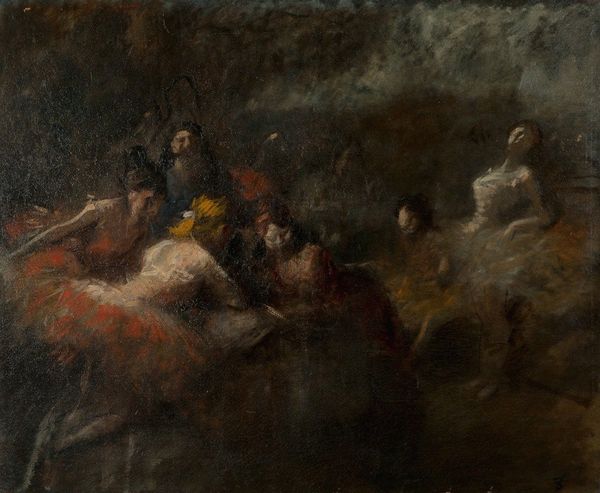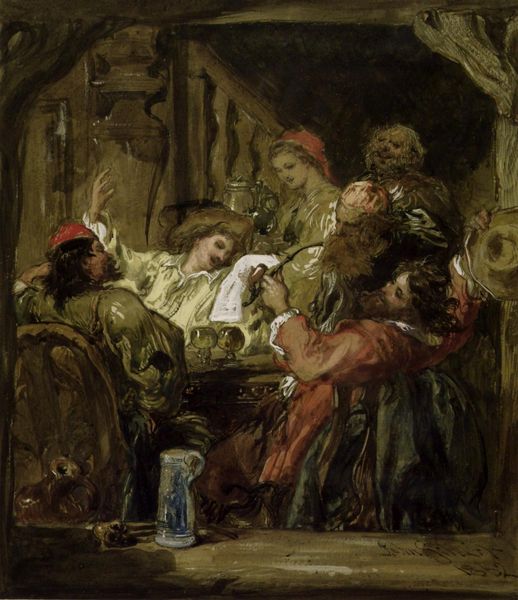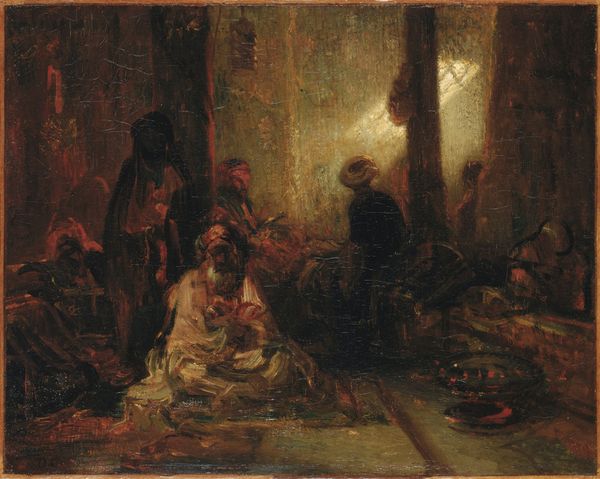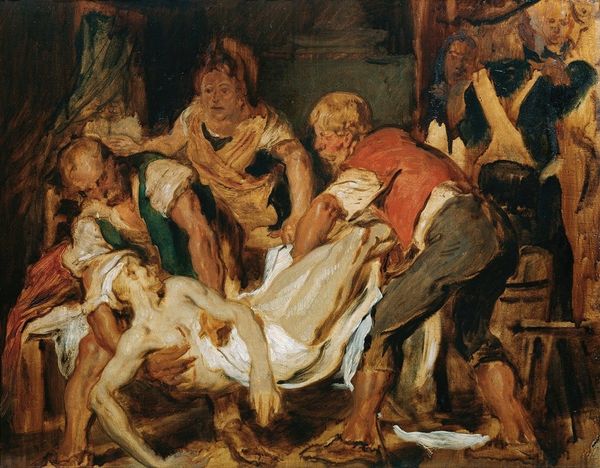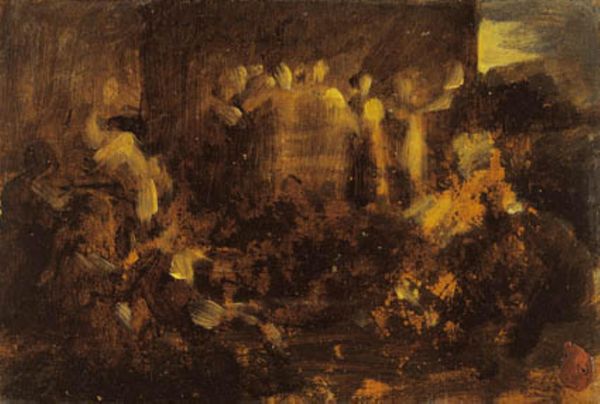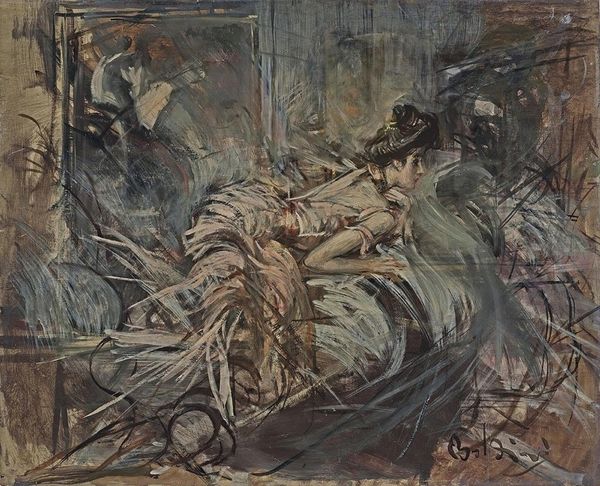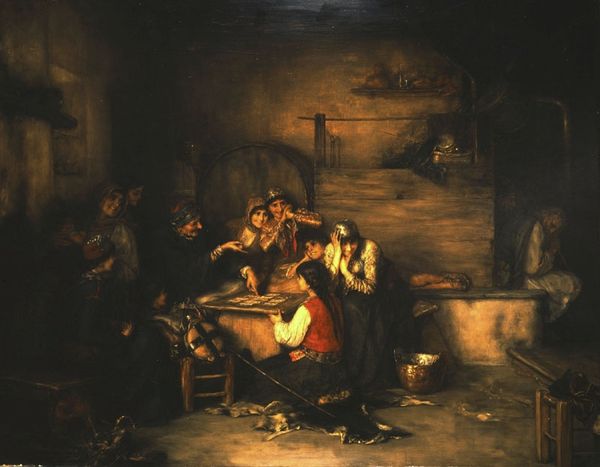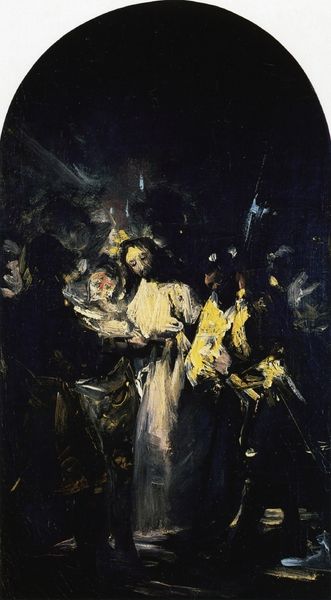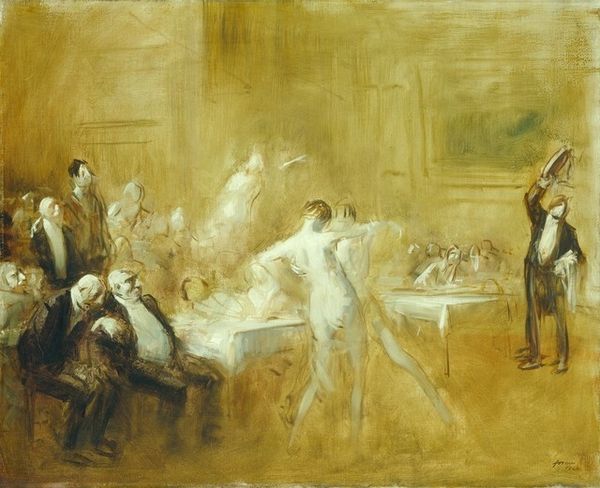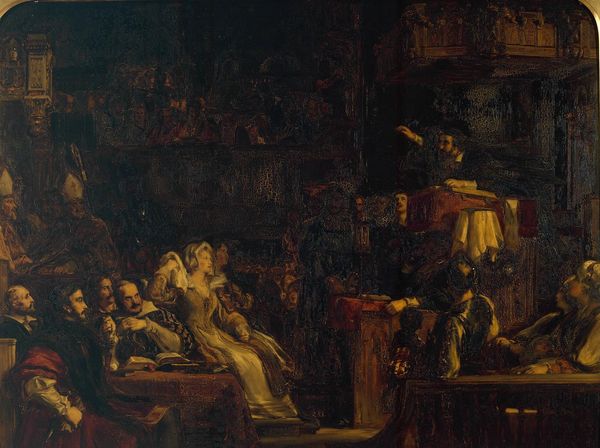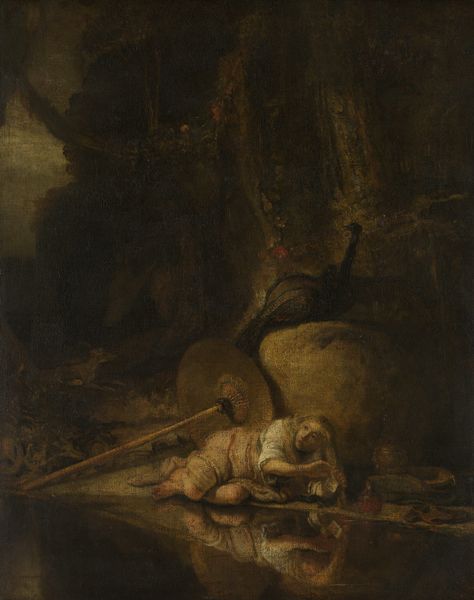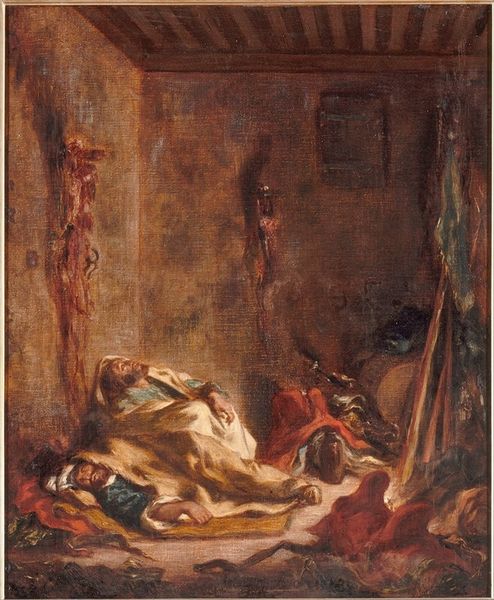
Copyright: Public domain
Nikolaos Gyzis painted this scene of Carnival in Athens, we think, towards the end of the 19th century. Gyzis shows us a lively gathering, full of gestures, movement, and shadow, but it also tells us something about a specific cultural moment. Greece at this time had recently gained independence and was trying to establish a modern identity, often by looking back to its classical past. Carnival, however, was a pre-Christian tradition, linked to older folk customs and the agricultural cycle. Here, it represents a kind of cultural disruption, a moment of excess, or a turning of the world upside down. By painting this scene, Gyzis captures a society in transition, grappling with its identity and heritage. His work is a reminder that art is never made in a vacuum, and that to understand it fully we need to explore the social, cultural, and historical context in which it was created, using resources such as archives, libraries, and historical societies.
Comments
No comments
Be the first to comment and join the conversation on the ultimate creative platform.
